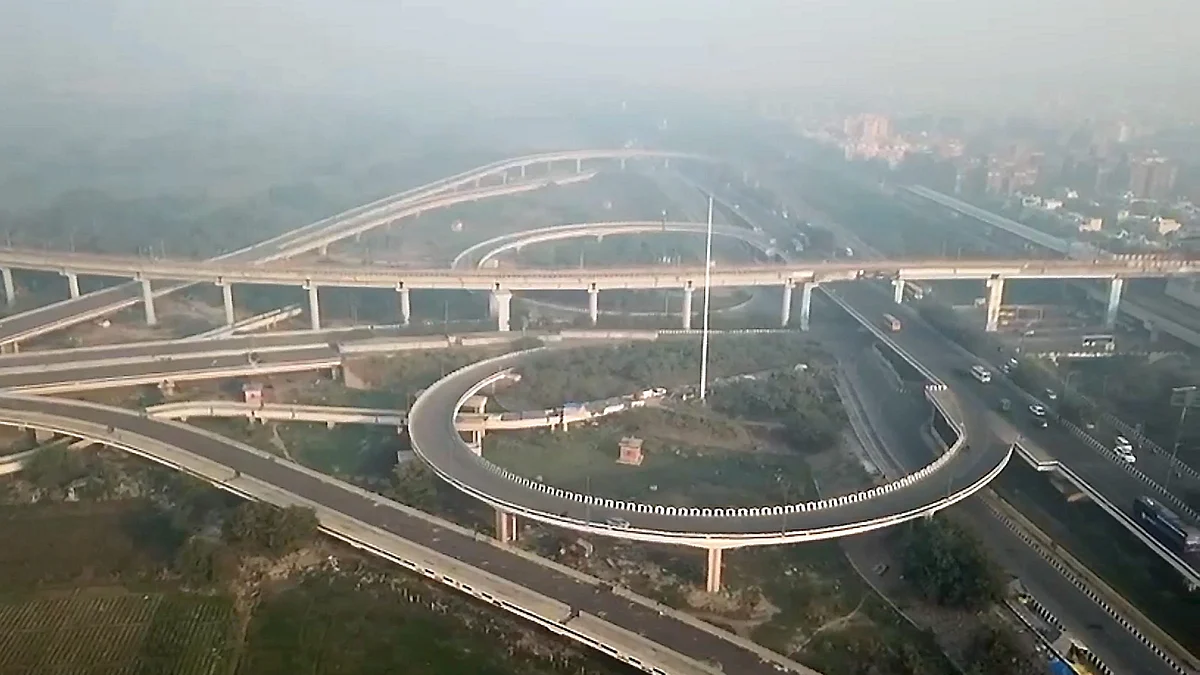Delhi’s air quality dips to ‘very poor’ category as AQI crosses 300
Officials blame the smog on falling temperatures, stagnant winds, and rising stubble burning across Punjab, Haryana, and Uttar Pradesh

Delhi awoke on Friday beneath a heavy, ashen sky — the sunlight muted, the air thick with the unmistakable sting of smog. The city’s Air Quality Index (AQI) once again slipped into the “very poor” category, crossing the 300 mark across most monitoring stations, according to data from the Central Pollution Control Board (CPCB).
At 7 am, Delhi’s average AQI stood at 312, signalling a sharp decline after a brief spell of improvement earlier in the week. A grey haze clung to the skyline, blurring landmarks and veiling the horizon in a pall of pollution. Commuters moved through muffled light and acrid air, as the city struggled to breathe.
The malaise extended beyond Delhi’s borders — Faridabad (295), Gurugram (288), Ghaziabad (296), Greater Noida (275), and Noida (289) all recorded worrying levels of air pollution. In several pockets of the capital, the numbers were starker still: Chandni Chowk’s AQI hit 350, while readings near the Indira Gandhi International Airport hovered around 290, falling in the “poor” zone.

Officials attributed this renewed suffocation to a deadly combination of falling temperatures, stagnant wind patterns, and an alarming spike in stubble burning across Punjab, Haryana, and Uttar Pradesh. According to the Decision Support System (DSS) for air quality forecasting, the contribution of farm fires to Delhi’s fine particulate matter (PM2.5) has risen sharply — from 21.5 per cent on Thursday to an estimated 36.9% on Friday, and is expected to remain elevated through the weekend.
Satellite imagery painted a troubling picture: 94 stubble-burning incidents in Punjab, 13 in Haryana, and 74 in Uttar Pradesh were detected on Wednesday alone. Each fire, small on its own, together formed a smoky wreath choking the plains of North India.
Since Diwali, Delhi’s air has oscillated between “poor” and “very poor,” occasionally brushing the “severe” threshold. On Thursday, students and environmental activists gathered at Jantar Mantar, rallying for clean air and accountability. They held placards that read “Let Us Breathe” and “Clean Air is a Right, Not a Privilege,” as they urged governments to act against the seasonal crisis that has, year after year, become Delhi’s dark autumn ritual.
Forecasts warn that the “very poor” spell is far from over. Pollution levels are likely to stay elevated until at least November 8, as authorities continue to track emissions, monitor stubble-burning activity, and issue advisories. For now, the capital remains cloaked in a sepia gloom — its mornings quiet, its horizons blurred, its citizens breathing through the weight of another polluted dawn.
With PTI inputs
Follow us on: Facebook, Twitter, Google News, Instagram
Join our official telegram channel (@nationalherald) and stay updated with the latest headlines
